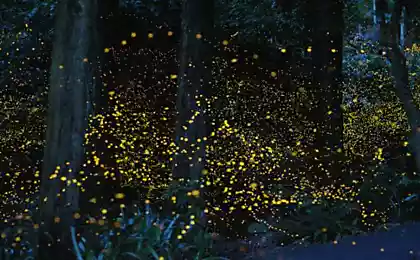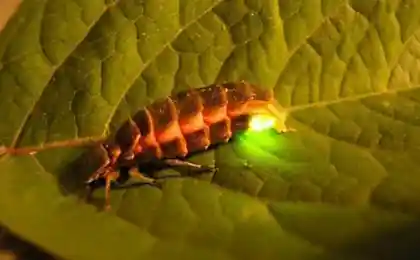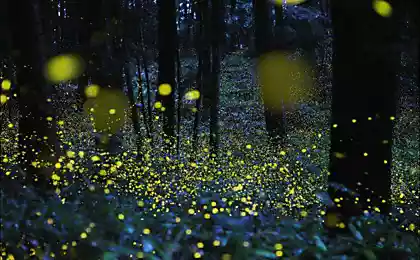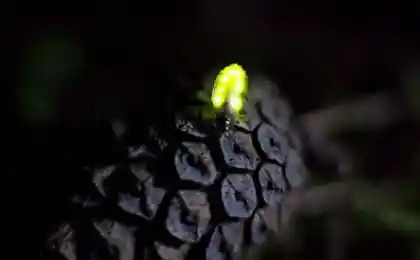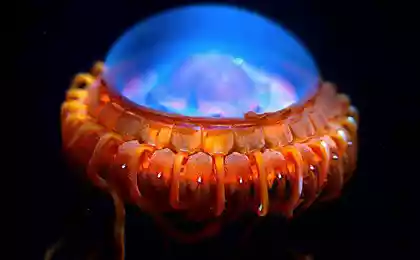917
Why do fireflies light up?
In total there are about 2,000 species of fireflies and each of them has the ability to emit phosphorescent light. The most common organ glow of these beetles - photophores - located at the end of the abdomen.
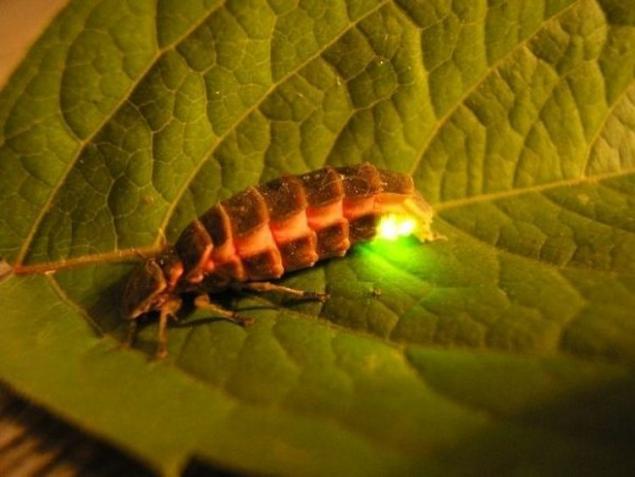
Photophores consists of three layers. The lower layer, the mirror is able to reflect light. Top - a translucent cuticle. In the middle layer are photogenic cells that produce light. As can be seen, on the device resembles an ordinary flashlight photophores. This type is called bioluminescence emission that occurs as a result of oxygen compounds of intracellular calcium, the molecule adenosine triphosphate (ATP) and the pigment in the presence of luciferin enzyme loyutsiferazy.
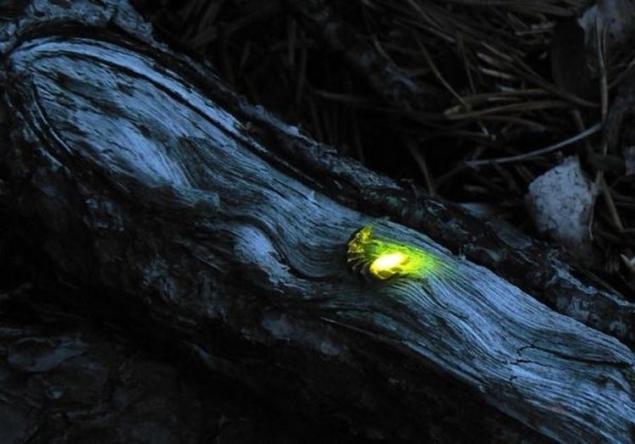
The light emitted by fireflies - cold. Unlike conventional light bulb, where most of the energy goes into useless heat, and the efficiency is 5% - 10%, fireflies converted into light 87% - 98% of consumed energy. Luminescence refers to these insects visible yellow-green part of the spectrum corresponding to wavelengths between 500 and 600 nm. Many species of fireflies in the state at will increase or decrease the intensity of the glow or emit light intermittently. When the nervous system signals the beetle "switched on" light in photophores begins to rapidly flow oxygen, and for the "off" enough to stop the flow. Insects do not have lungs, and oxygen is passed through special tubules - tracheoles. Oxygen supply is located in the mitochondria. For quick selection of necessary amount of oxygen the body firefly produces nitric oxide, which, acting in the mitochondria, which displaces oxygen.
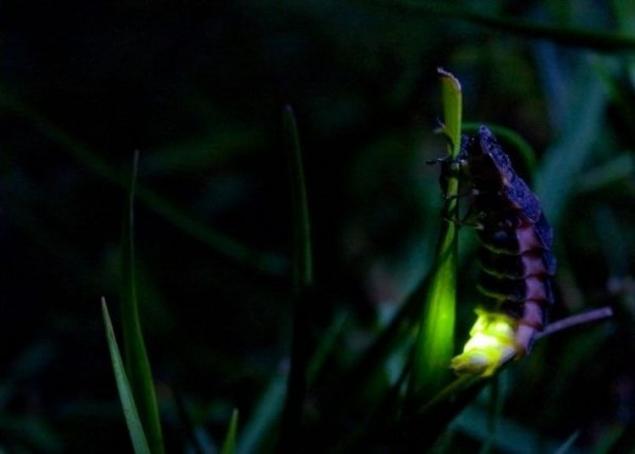
Bioluminescence of fireflies is a means of communication between the sexes. Insects are not only signaled their location, but also distinguish his partner at a special frequency flicker. Tropical and North American species of fireflies sometimes sing entire choir serenades for their partners, both flashing and fading the entire flock. A flock of females answered them the same lumiere.
Source: goodnewsanimal.ru

Photophores consists of three layers. The lower layer, the mirror is able to reflect light. Top - a translucent cuticle. In the middle layer are photogenic cells that produce light. As can be seen, on the device resembles an ordinary flashlight photophores. This type is called bioluminescence emission that occurs as a result of oxygen compounds of intracellular calcium, the molecule adenosine triphosphate (ATP) and the pigment in the presence of luciferin enzyme loyutsiferazy.

The light emitted by fireflies - cold. Unlike conventional light bulb, where most of the energy goes into useless heat, and the efficiency is 5% - 10%, fireflies converted into light 87% - 98% of consumed energy. Luminescence refers to these insects visible yellow-green part of the spectrum corresponding to wavelengths between 500 and 600 nm. Many species of fireflies in the state at will increase or decrease the intensity of the glow or emit light intermittently. When the nervous system signals the beetle "switched on" light in photophores begins to rapidly flow oxygen, and for the "off" enough to stop the flow. Insects do not have lungs, and oxygen is passed through special tubules - tracheoles. Oxygen supply is located in the mitochondria. For quick selection of necessary amount of oxygen the body firefly produces nitric oxide, which, acting in the mitochondria, which displaces oxygen.

Bioluminescence of fireflies is a means of communication between the sexes. Insects are not only signaled their location, but also distinguish his partner at a special frequency flicker. Tropical and North American species of fireflies sometimes sing entire choir serenades for their partners, both flashing and fading the entire flock. A flock of females answered them the same lumiere.
Source: goodnewsanimal.ru


